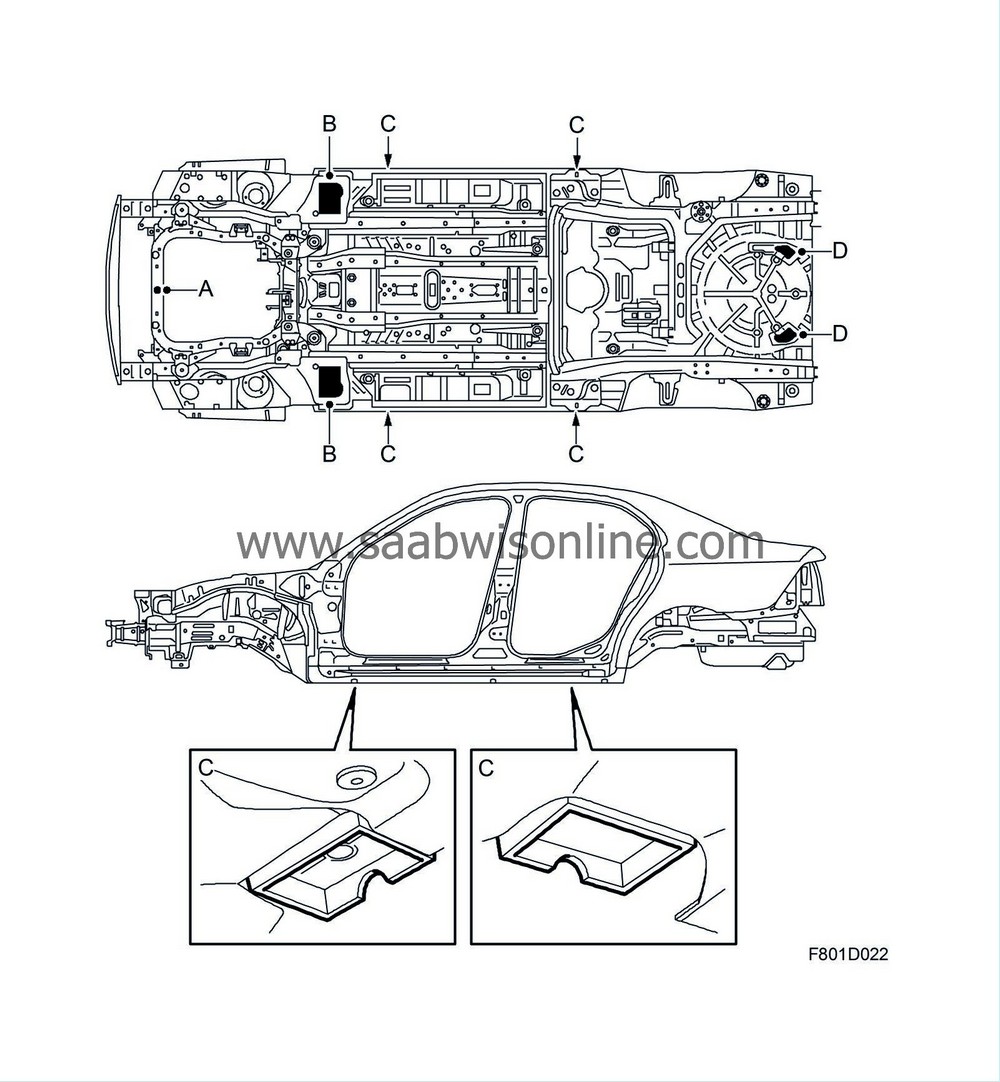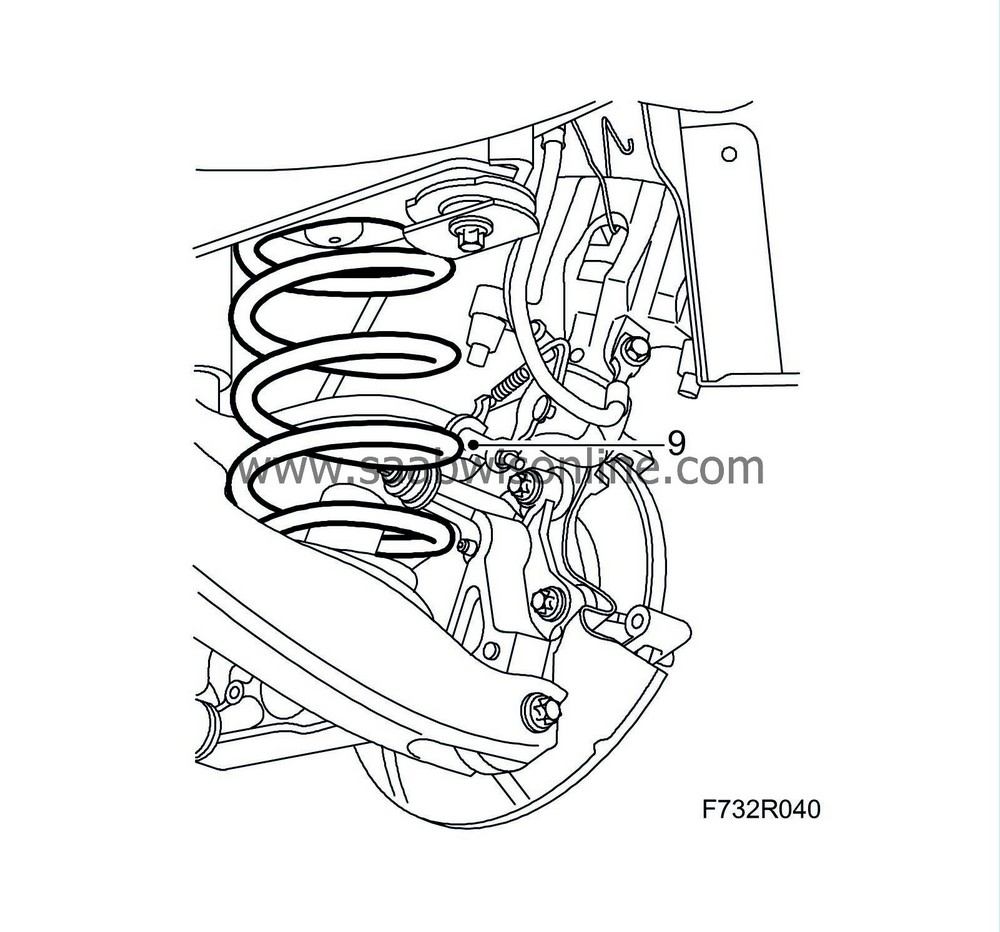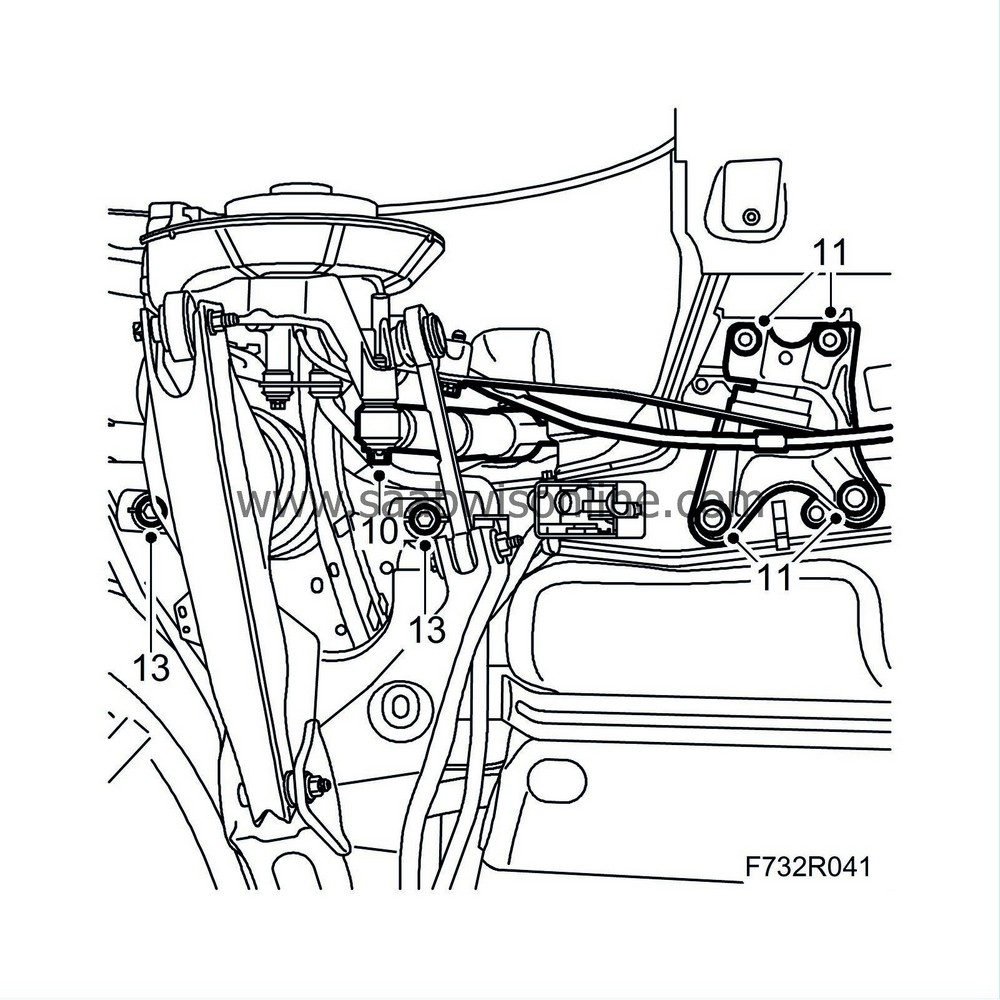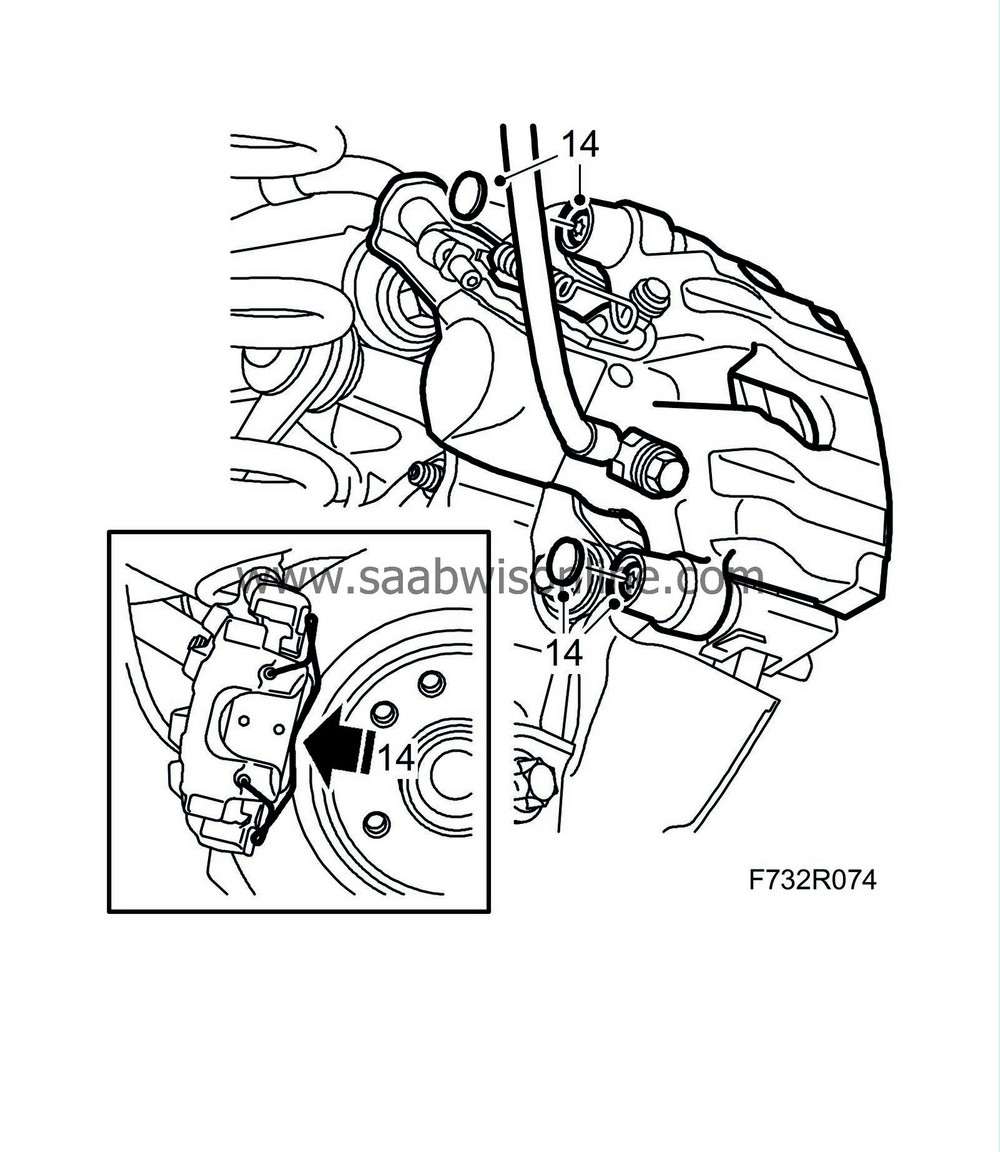Subframe
| Subframe |
| To remove |
| 1. |
Raise the car. use the rear jacking points C and the front jacking points B, see
Jacking and attaching points
.

|
|
| 2. |
Remove the rear wheels.
|
|
| 3. |
Cars with tyre pressure monitoring:
Remove the rear RH wing liner
.
|
|
| 4. |
Remove the spring and the hydraulic bodies, remove the brake pads and suspend the hydraulic bodies on a hook in the brake hose holder on both sides.

|
|||||||
| 5. |
Remove the parking brake cables from the clamps on the longitudinal links on both sides.

|
|
| 6. |
Open the protective case and unplug the connection for the electrical circuit. Remove the wiring harness from the clip set and suspend it out of the way.
|
|
| 7. |
For cars with tyre pressure monitoring:
Remove the connector from the signal detector. Remove and twist away the wiring harness.
|
|
| 8. |
Cut the exhaust pipe 87 mm in front of the front silencer using
83 95 667 Pipe cutter/exhaust system
. Remove the exhaust system. Clean the cut section of burrs and dirt.
|
|
| 9. |
Compress the spring with a
88 18 791 Spring compressor
and the small jaws on one side and lift away the spring.
Change the 88 18 791 Spring compressor over to the other spring and remove it. 
|
|
| 10. |
Clean, lubricate and remove the bolts holding the shock absorber to the steering swivel member.

|
|
| 11. |
CV:
Remove the chassis reinforcement from the rear subframe
.
Remove the front longitudinal link attachments. |
|
| 12. |
Position the
83 95 311 Trolley lift
underneath with
89 96 944 Jig, rear subframe
.
|
|
| 13. |
Remove the bolts holding the subframe to the body.
|
|
| 14. |
Remove the parking brake cables from their brackets in the body.
|
|
| 15. |
Make sure that the parking brake cables and the cable network allow the longitudinal link to move freely and lower the trolley lift with the subframe.
|
|
| To fit |
| 1. |
Lift the subframe with the
83 95 311 Trolley lift
and
89 96 944 Jig, rear subframe
.
|
|
| 2. |
Lift the subframe so that the inner sections of the bushes are pressing against the body. Fit the subframe bolts on both sides.
Tightening torque 75 Nm +135° (55 lbf ft +135°) 
|
|
| 3. |
Fit the longitudinal links and brackets for the parking brake cables to the body.
Tightening torque 70 Nm +90° (52 lbf ft +90°) |
|
| 4. |
Lower and pull away the trolley lift.
|
|
| 5. |
Fit the parking brake cables into their brackets.

|
|
| 6. |
Cars with tyre pressure monitoring:
Fit the wiring harness and plug in the connector for the signal detector.
|
|
| 7. |
Connect and fit the wiring harness into the protective case and close the lid.
|
|
| 8. |
Fit the shock absorbers to the steering swivel members.
Tightening torque 150 Nm (110 lbf ft)
|
|||||||
| 9. |
Fit the spring supports to the spring.
|
|
| 11. |
Fit the exhaust system and fit a splice (see EPC).
Tightening torque 40 Nm (30 lbf ft) |
|
| 12. |
Remove the inner brake pad and screw in the brake piston using
89 96 969 Resetting tool
and
89 96 977 Adapter
.

|
|
| 13. |
Fit the brake pads.
|
|||||||
| 14. |
Fit the hydraulic body.
Tightening torque 28 Nm (21 lbf ft) Fit the protective covers. Fit the spring to the brake caliper. 
|
|
| 15. |
Repeat steps 12-14 on the other side.
|
|
| 16. |
Cars with tyre pressure monitoring:
Fit the wing liner
.
|
|
| 17. |
Fit the wheels
.
|
|
| 18. |
Repeat the steps 11-15 for the other side of the car.
|
|
| 19. |
Lower the car to the floor.
|
|
| 20. |
Depress the brake pedal several times to press out the self adjustment of the brake pistons and the parking brake.
|
|



